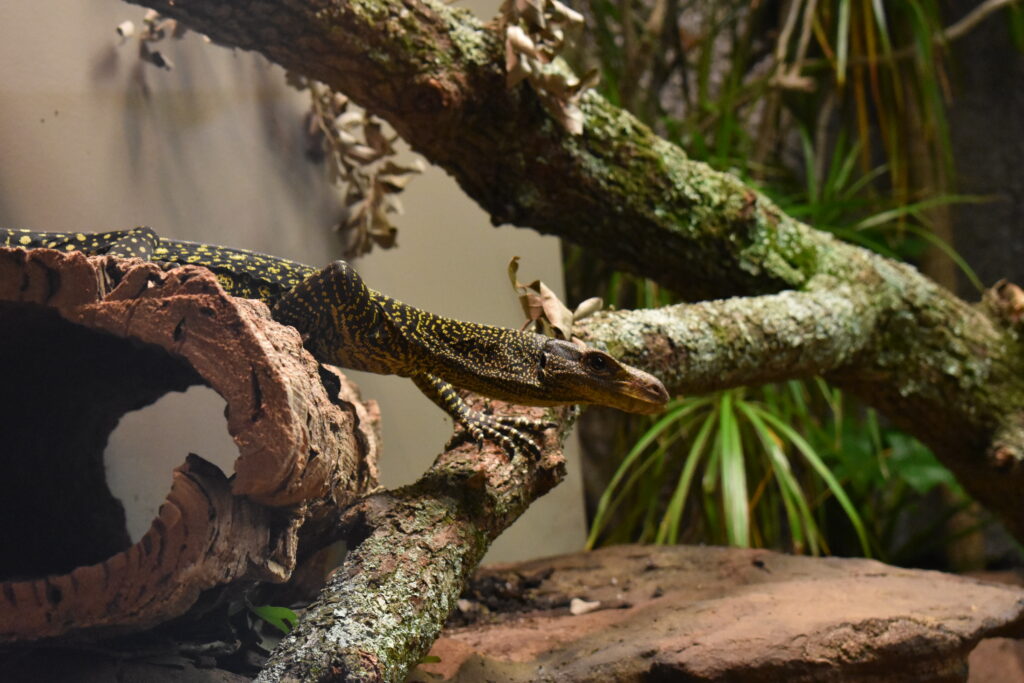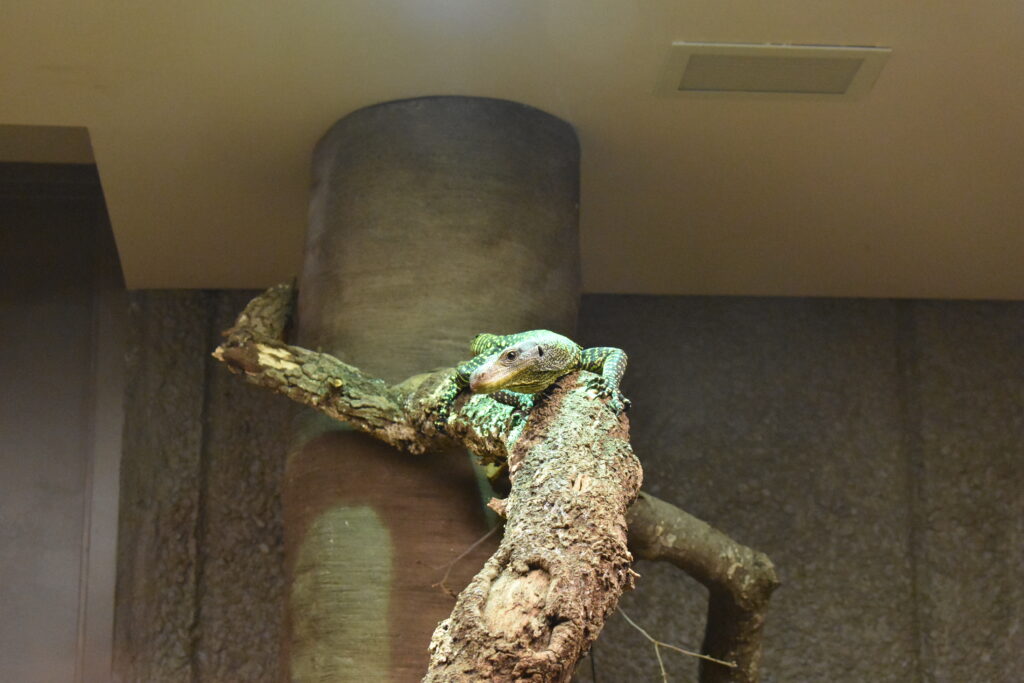Monitor and Observe
June 4 is the Virginia Zoo’s anniversary of the World of Reptiles and Friends, which opened to the public in 2018. Zoo visitors can find reptiles, amphibians and even a handful of mammal species on exhibit in this indoor space, including the smallest of frogs to the impressive-looking Siamese crocodile and a species whose name includes “crocodile” but actually isn’t a crocodilian at all.

The crocodile monitor is one of 79 known species of monitor lizards. This species, also called the Salvadori monitor or a more fitting name – the tree crocodile, is primarily arboreal and can be found in southeast Asia. Its common range and habitat includes lowland forest canopies and adjacent savannahs, usually near water sources such as swamps or rivers in Papua New Guinea.
This species earned its name from its razor sharp claws and large, serrated teeth. Crocodile monitors have black and green bodies with bright yellow spots and stripes. This species is one of the largest monitor species, with individuals weighing up to 44 pounds and measuring up to eight feet in total length, with their tail comprising two-thirds of their length. These monitors use their long, powerful tails like a whip for defense against predators.
In the wild, not much is known about this species’ diet, but many scientists believe they eat small mammals, birds and fish. Crocodile monitors are elusive in the wild, but are believed to solitary until breeding. It is estimated that they can live up to 20 years in the wild. Although this species is listed as a least concern and is not considered to be threatened with extinction, they are protected in New Guinea due to an increase in loss of habitat due to deforestation and a demand for their meat and skin. A recent introduction into the pet trade may also have an effect on population numbers.

Two crocodile monitors can be found at the Virginia Zoo thanks to our participation in the Species Survival Plan®. Finn, a six-foot-long male, was born on October 6, 2016 and arrived at the Zoo on March 6, 2018. Finn ‘s diet consists of rodents, but he is occasionally offered figs as a treat. His future potential mate, female Fionna, is much smaller than Finn, measuring three-and-a-half feet long. Fionna and Finn still have a couple of years before they can officially be introduced for potential breeding, but Keepers are working with both lizards to make sure they are acclimated to their exhibits as well as to staff who work with them. Finn can be seen on exhibit and Fionna lives behind-the-scenes.